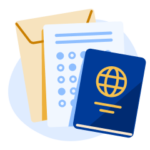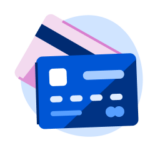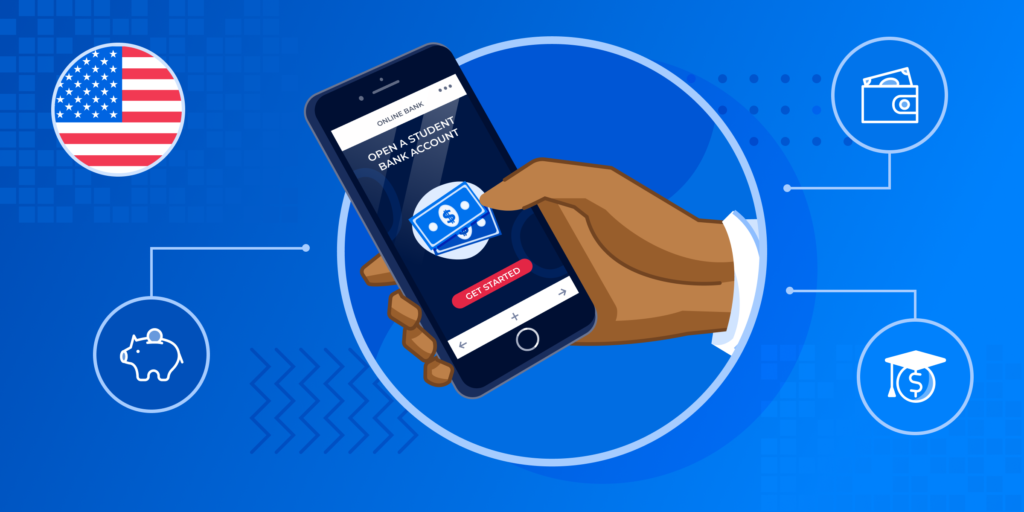If you’re an international student planning to study in the United States but are unsure of how to open a bank account, then this blog is for you. There can be lots of paperwork involved in studying abroad, but one of the top things on your to-do list should be opening a bank account in your study abroad destination country.
Managing your finances with a foreign bank account while in the US can require careful management and account selection, as many banks charge foreign transaction and automated teller machine (ATM) fees. Although opening a bank account in the US may not seem straightforward, this post will outline how simple the process can be.

Step 1: Gather Your Documents
Before choosing a bank, ensure you have the proper documents handy. International students generally require the following documents to open a bank account in the US:
- Student visa
- Passport
- Proof of university enrollment
- Secondary ID (such as a driver’s license or student card)
Most banks will have a list on their website of the specific documents international students will need to open a bank account at their bank. Double-check online or over the phone that you have everything you need before making a trip to the bank.

Step 2: Choose a Bank
As an international student in the US, you have many options for opening a bank account. Several banking institutions offer great plans for students. These plans cater to the specific needs of students and are often reasonably priced.
Before selecting a bank, you should do some research to determine which options suit your personal financial needs.
Once you’ve chosen a bank, you may have to pay a fee to open an account. This fee amount will be listed on the bank’s website and will vary by financial institution. If you can’t find the information you’re looking for on the bank’s website, use the chatbot on the bank’s website, or call a bank representative, who can help answer any questions you may have.
Thinking about studying in Canada instead? Read about how international students can open a bank account in Canada.

Step 3: Choose Your Account Type
After selecting a bank, it’s time to choose an account type. In the US, there are two types of bank accounts: a checking account and a savings account.
A checking account allows you to withdraw, send, and deposit money at a brick-and-mortar bank, online bank, or credit union. A savings account, as the name suggests, is designed for saving money and enables you to earn higher interest. If you only plan to open one account, make it a checking account, which will cover most of your financial needs. However, many students opt for both a checking and savings account, so don’t feel limited to just one.
It’s vital to note that some banks only permit students to open an account with a specific student visa, such as an F-1 visa (academic studies), J-1 visa (practical training), or M-1 visa (vocational studies). Before deciding on an account type, check your bank’s requirements.

Step 4: How to Use Your Student Bank Account
Once you’ve decided on a bank and signed up for an account, you’ll be issued a debit card. You’ll then be given a personal identification number (PIN), which allows you to access your account through a debit machine or an ATM. To protect your account from unauthorized access, don’t share your PIN number with anyone.
While most financial institutions are open Monday to Friday during business hours and for a limited time on the weekends and evenings, many international students rely on online banking because it’s more convenient.
Online banking allows you to:
- Access your account and bank services at any time of day
- Pay your bills
- Transfer money from one account to another
- Check your account balance
- Send e-transfers
- View your statements
- Automate your savings
It’s important to be careful when banking online. Always ensure that you’re connected to a secure WiFi network, that your personal information isn’t visible to anyone, and that you log out when you’re done. Following these simple precautions will help you bank online more safely.

Opening a bank account in the US helps international students to manage their finances and easily access their money. It takes a bit of work to get set up, but can make living in the US as an international student easier.
Ready to start your study journey to the United States? Explore study programs in the US on the ApplyBoard platform!



